In the month of July and August I got to spend 5 and a half weeks on the beautiful Maldives amidst the Indian Ocean, in 4 different locations and with 4 different organisations. And for the first two weeks of this time, I was able to work with the Olive Ridley Project, an amazing organisation that tries their best to protect Sea Turtles and their habitat in the Indian Ocean.
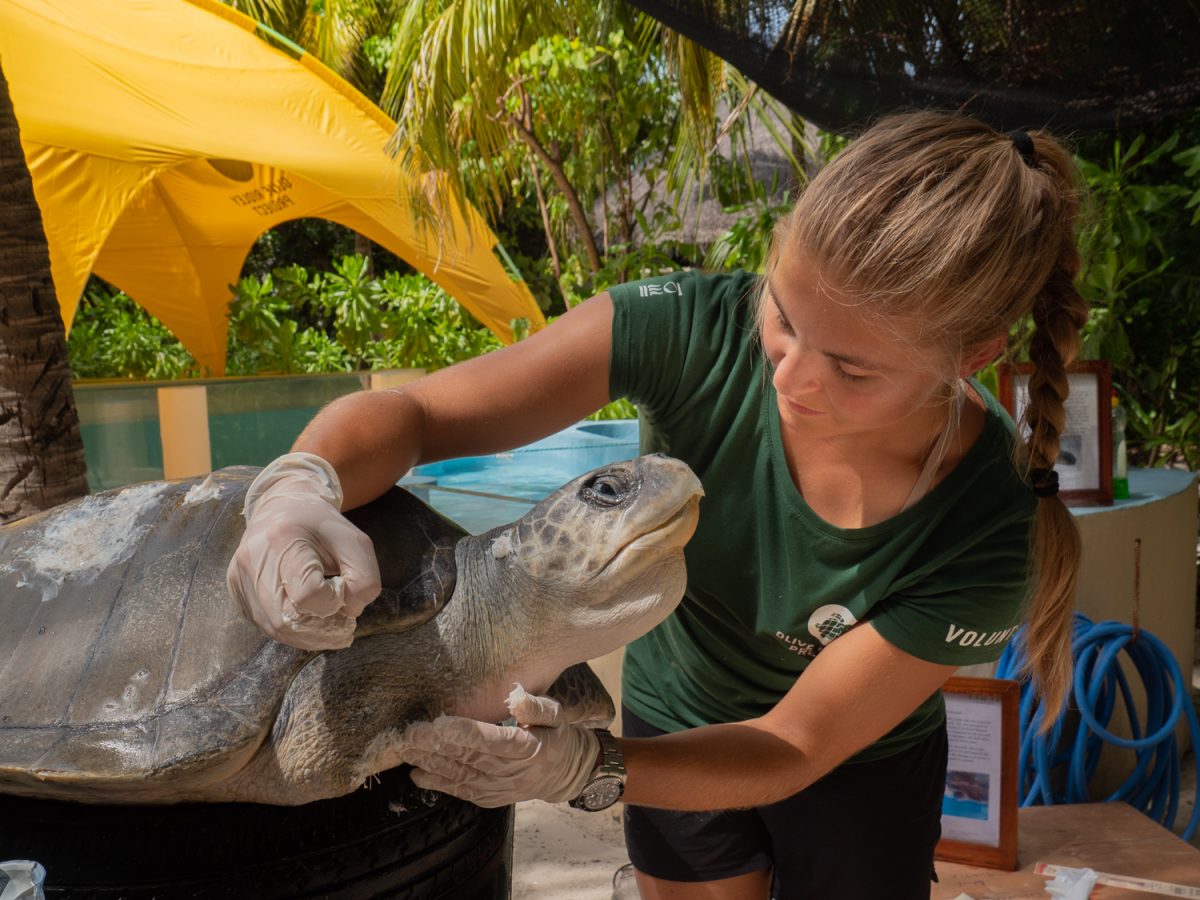

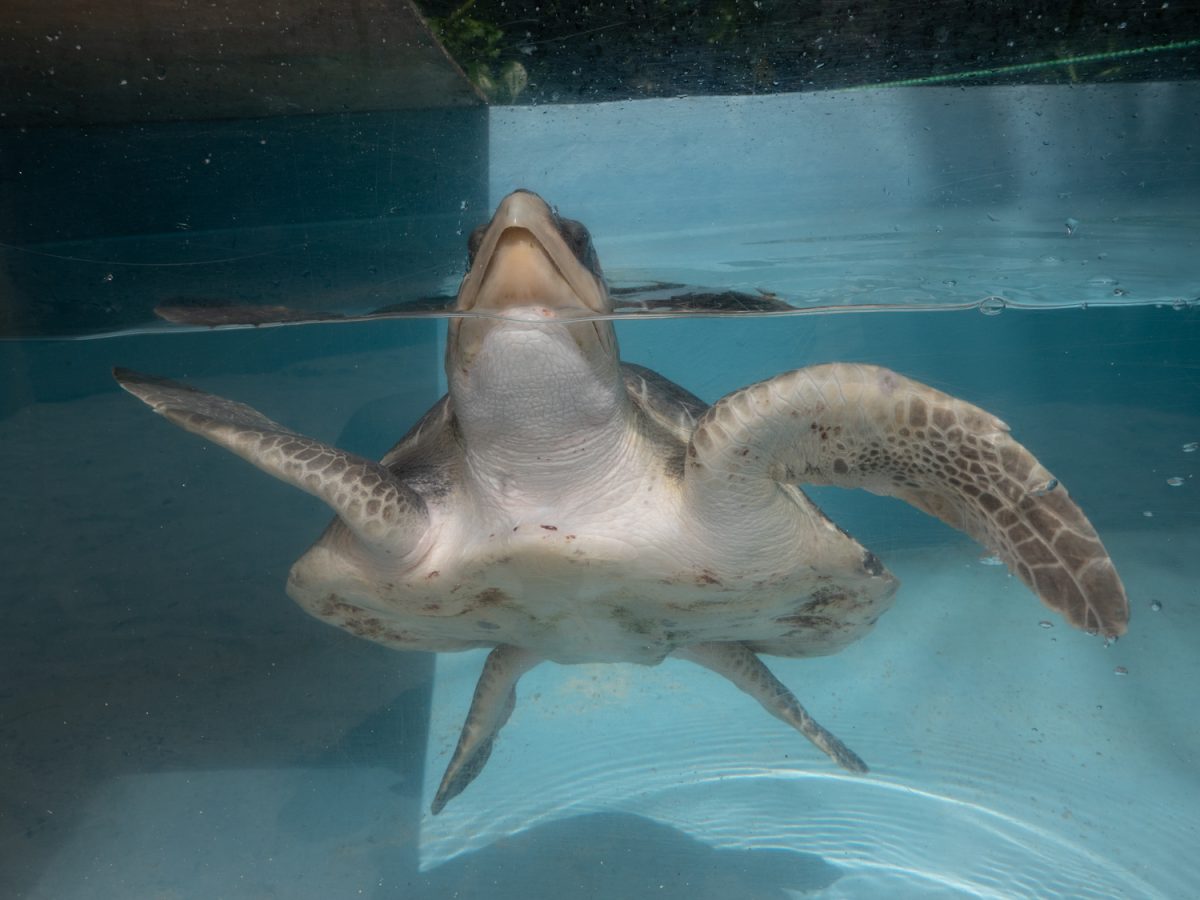
More specifically, I have been at the Rescue and Rehabilitation Center for Sea Turtles of the ORP in Baa Atoll, which was a very special experience for me, as a Veterinary Medicine student who is particularly interested in Marine Animals. Here, the Turtles get surgery, if needed, are treated for injuries, and have time to recover, until they are strong enough to be released.
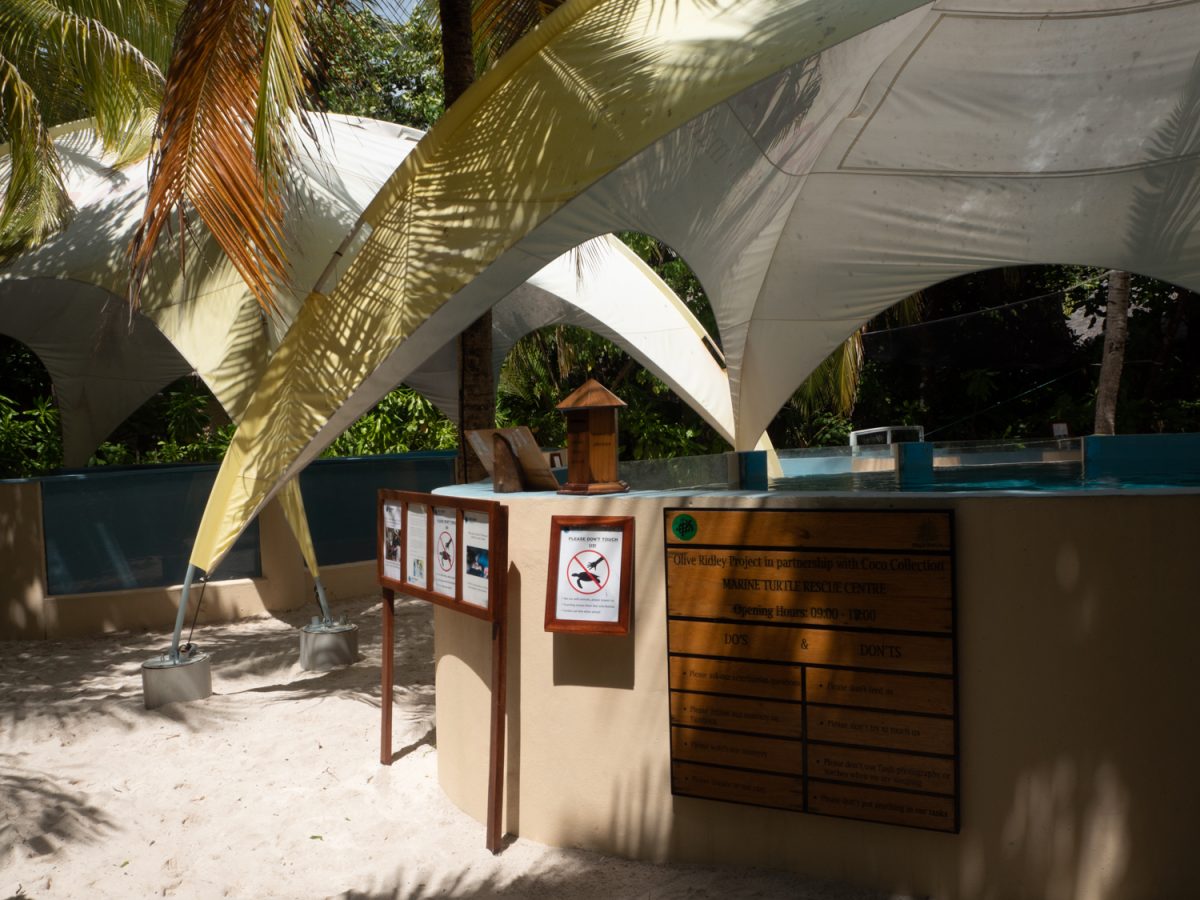
And the ORP´s well-equipped veterinary clinic on a small Maldivian island really is one of a kind, with the first vet here in the centre´s opening year 2017 having even been the very first vet in the whole country.
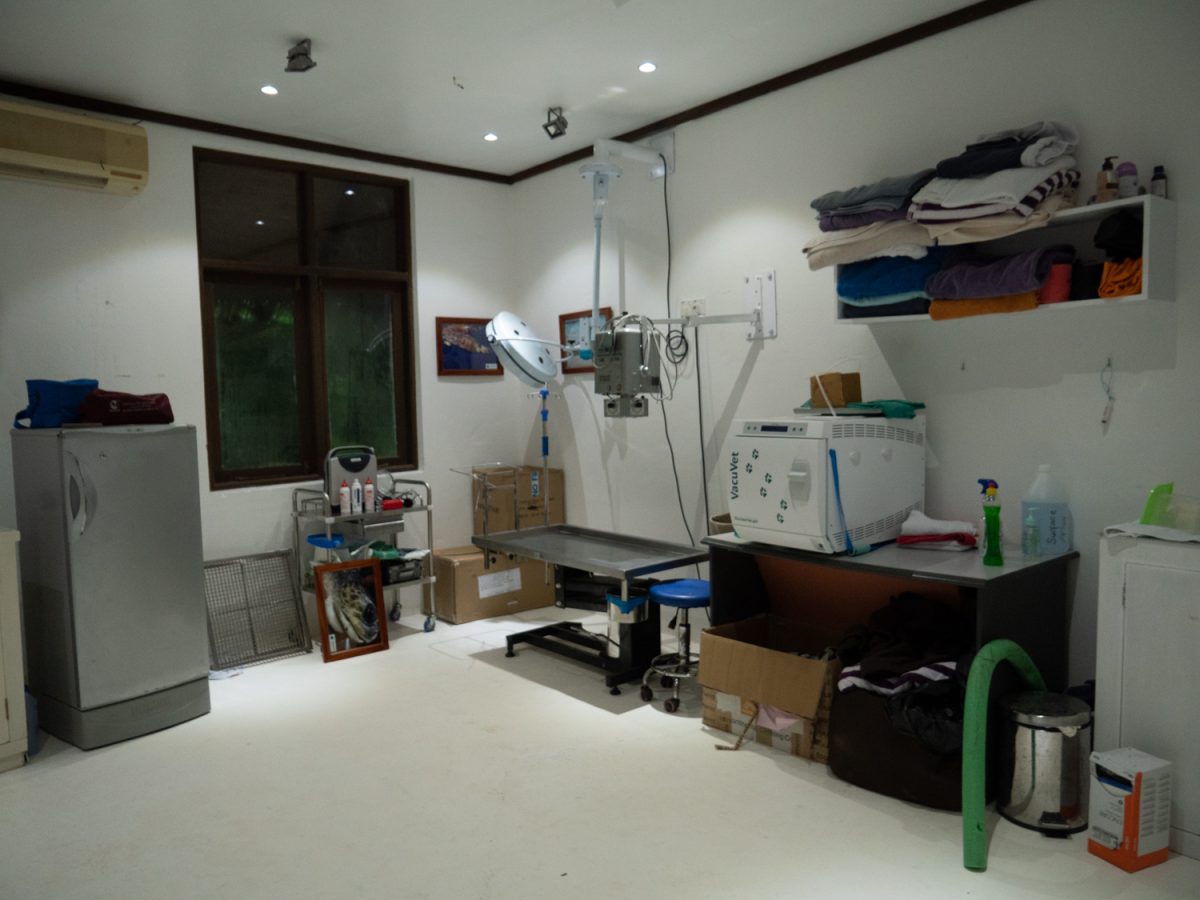
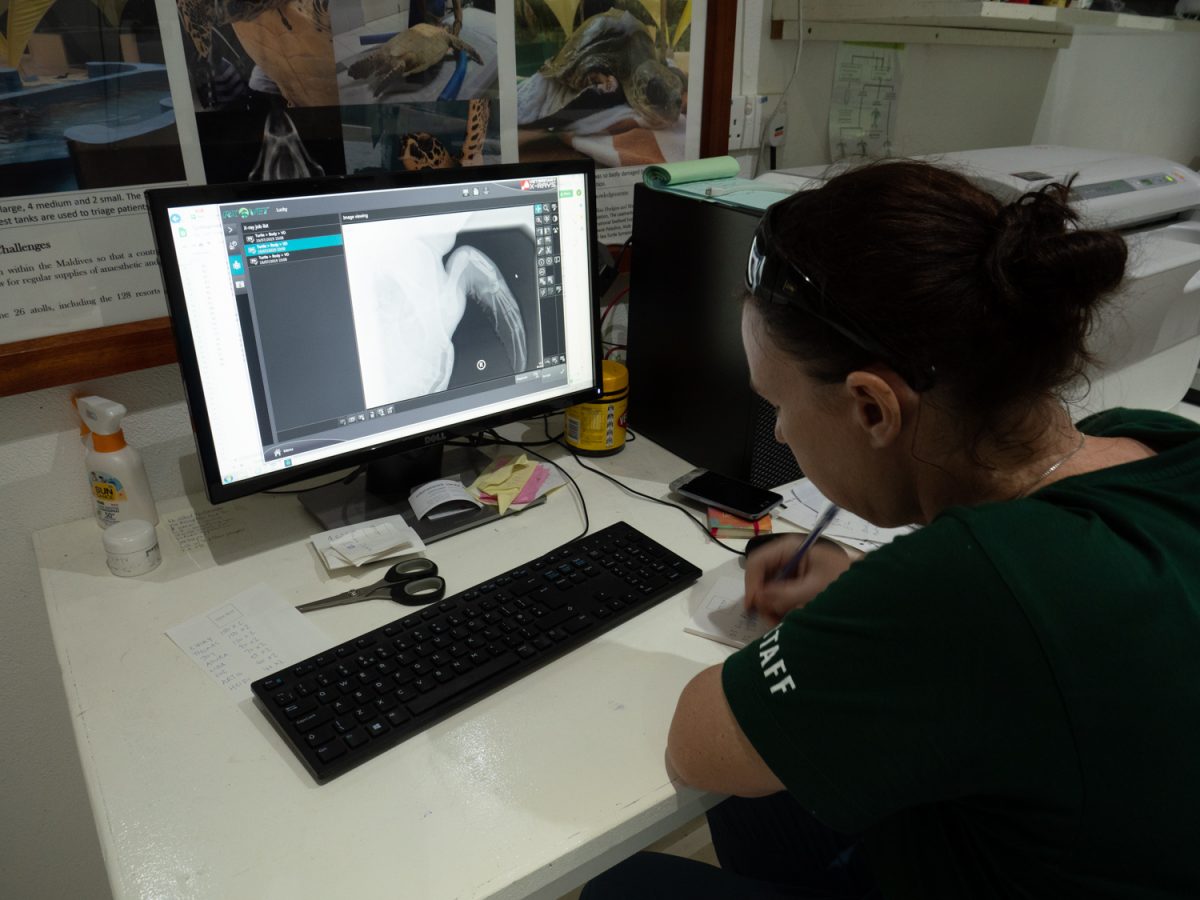

The establishment of a rescue centre in this location was particularly important, because a high number of turtles entangled in ghost nets (Discarded fishing nets) are washed up on the many beaches of the islands every year. The turtles often suffer from severe injuries because the nets cut deep into their limbs and carapace, many times making a flipper amputation necessary, and others suffer from exhaustion, malnourishment and weakness through the inability to feed due to the heavy weight of the nets dragging them down. Many turtles also suffer from “Buoyancy syndrome”, which is the inability to dive due to air being trapped under their carapace that keeps them afloat. This can be caused by a lung injury from the exhausting efforts to free themselves from the nets, and it takes a long time for the air to dissolve through the tissues and out of the body again.

Most of the Turtles that are found entangled are Olive Ridley Turtles – hence the project´s name – and that is because this species usually lives in the open waters, in which unfortunately many fishing nets drift, brought by the ocean´s currents from Asia to the Maldives. But the Centre of course accepts all kinds of Turtle species, who are found with any kind of injury, and who are then brought to the Centre either by Seaplanes or Speedboats.
While my stay with the Olive Ridley Project I assisted the Wildlife Veterinarian Jackie Reed in the daily running of the Centre, including the Animal Care and Treatment, educational activities for resort guests, and monitoring of hatching events on the island´s beaches. I was taught many substantial skills in the handling of Sea Turtles, and I learned a lot about Sea Turtle Ecology, Conservation and Medicine.
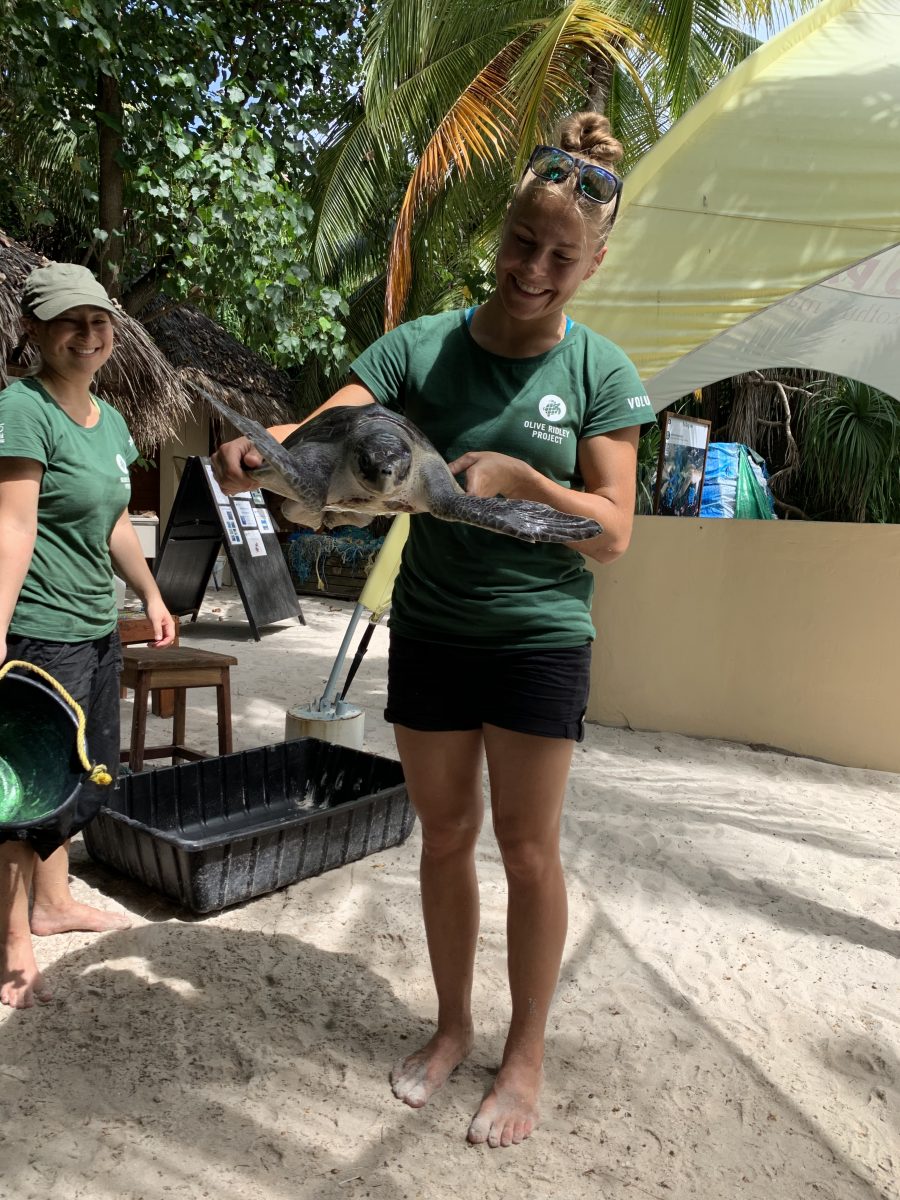
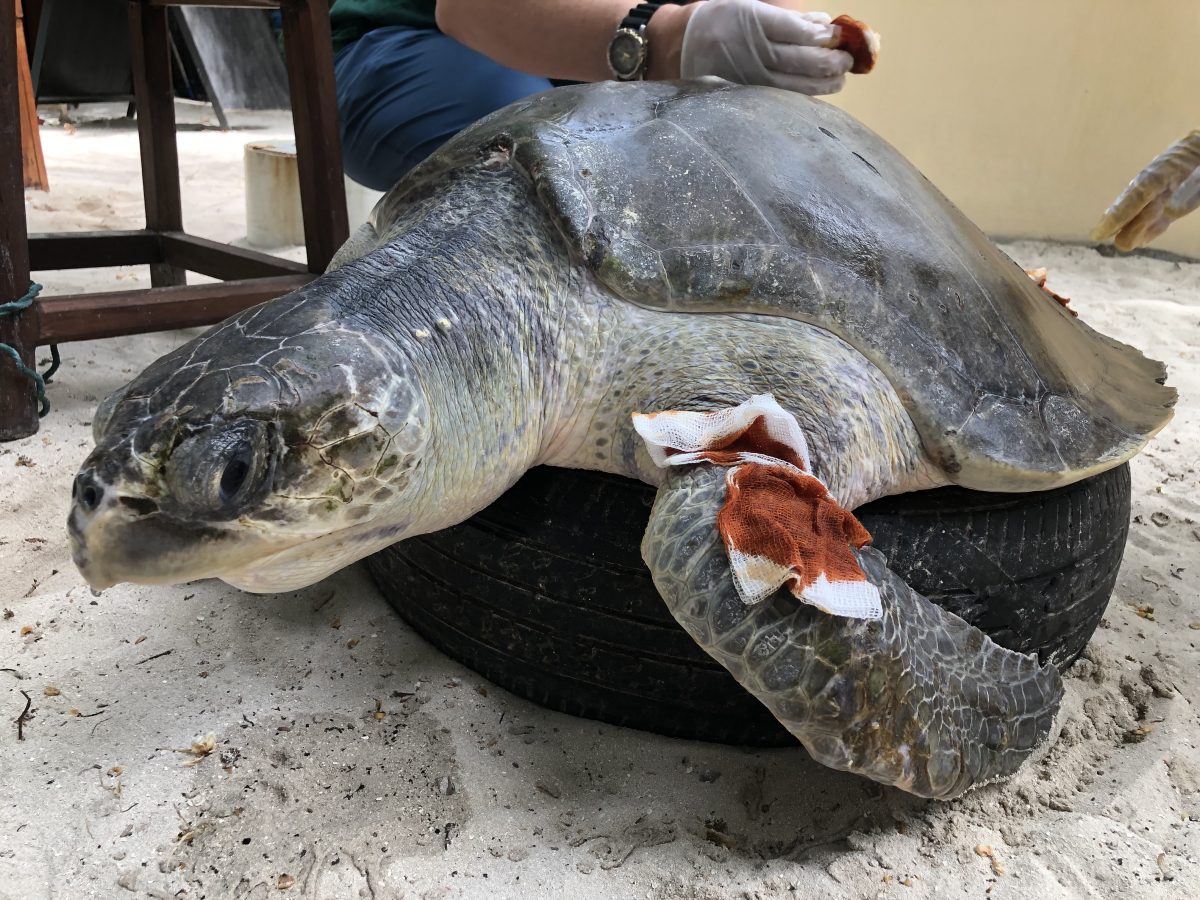

The daily routine consisted of feeding the turtles, cleaning the tanks and education of the visitors who came to watch the turtles feeding in the centre, and if necessary, also the medication with drugs. Weekly, the turtles where weighed to monitor their progress in body condition, and to then adjust their diet, if necessary. At the same time, we cleaned them with brushes and toothbrushes to remove algae growing on their scutes and scales, a job which usually cleaner fish would do in the ocean.

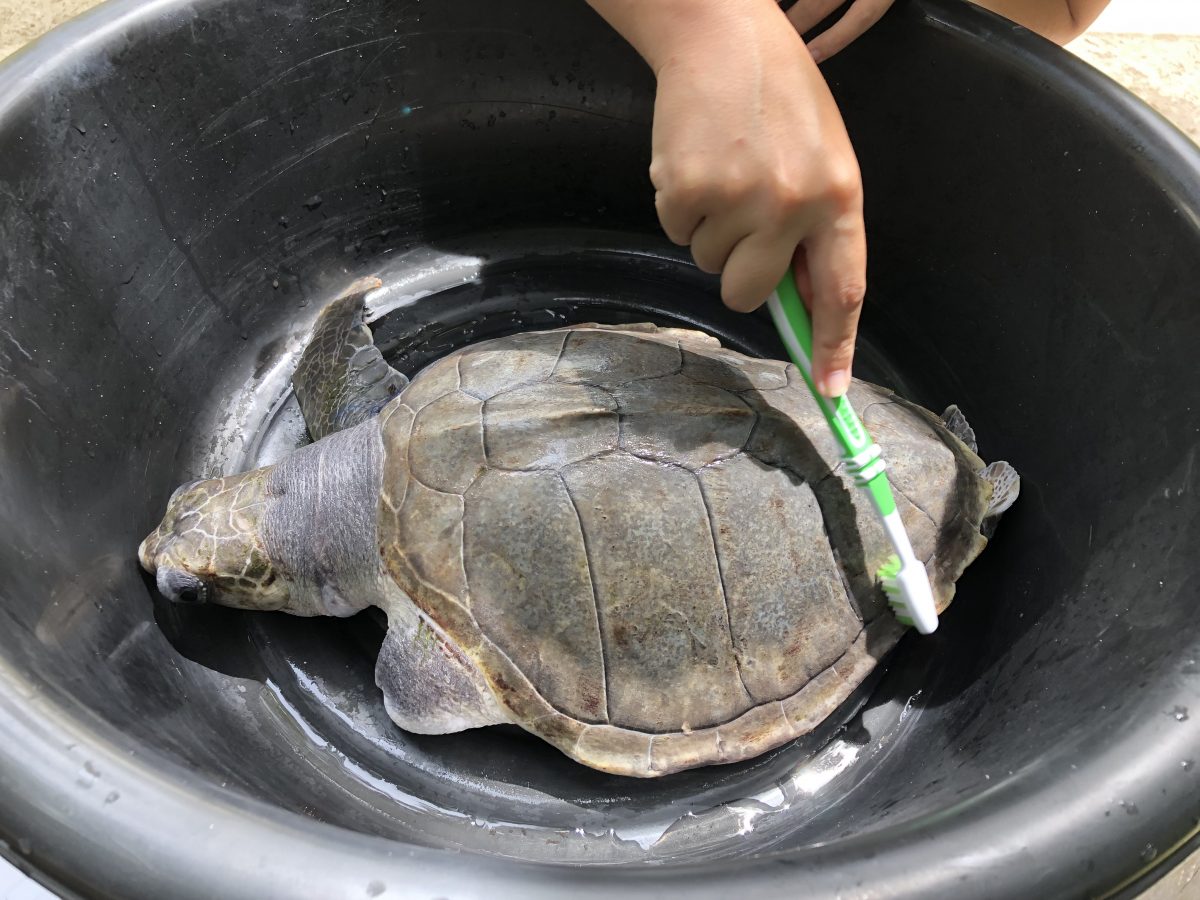
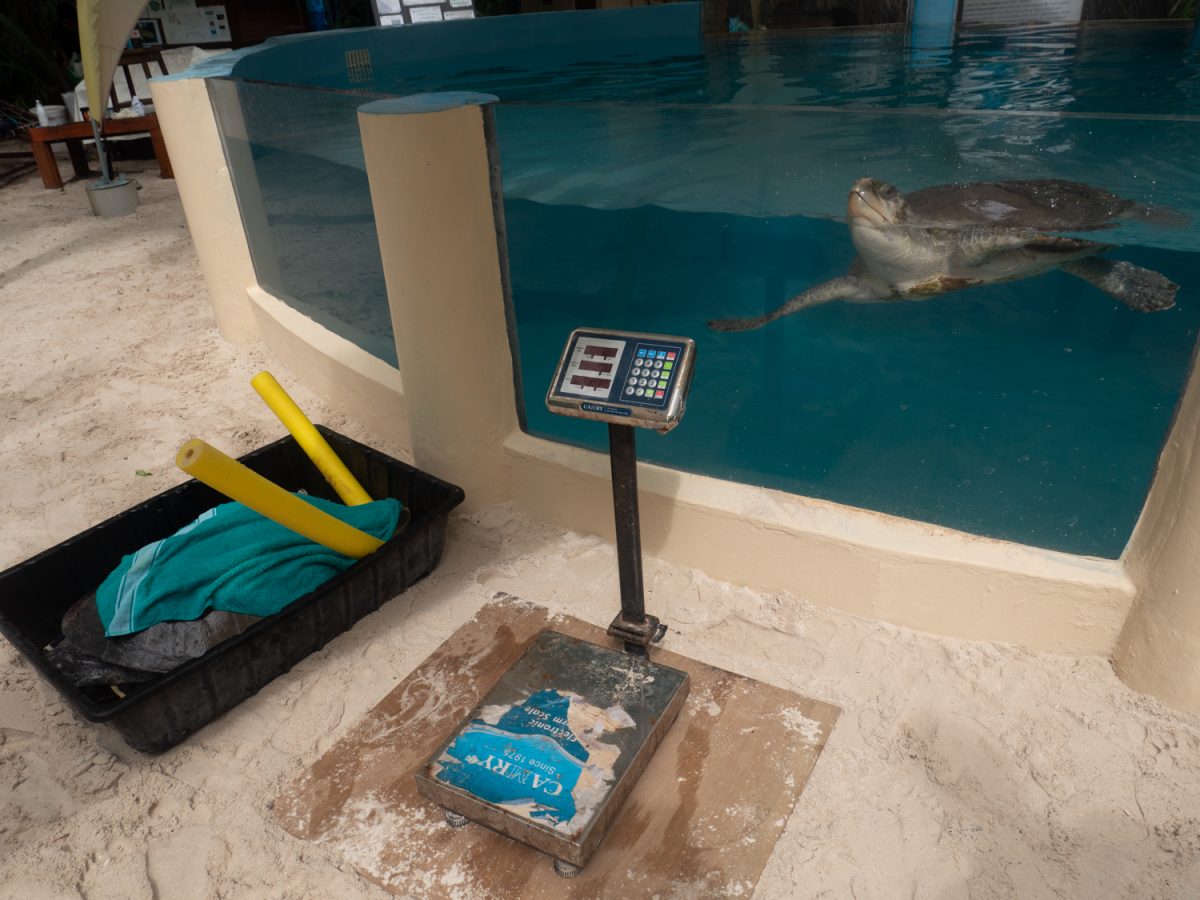
Veterinary procedures that I was able to follow or sometimes even apply myself were wound treatments, injections of antibiotics, physio- and laser therapy to retain the range of motion in extremities with scar tissue, X rays to diagnose Osteomyelitis (bacterial bone infection), and diagnostic histology of blood and tissue smears to check for Anemia or Hypoproteinemia.

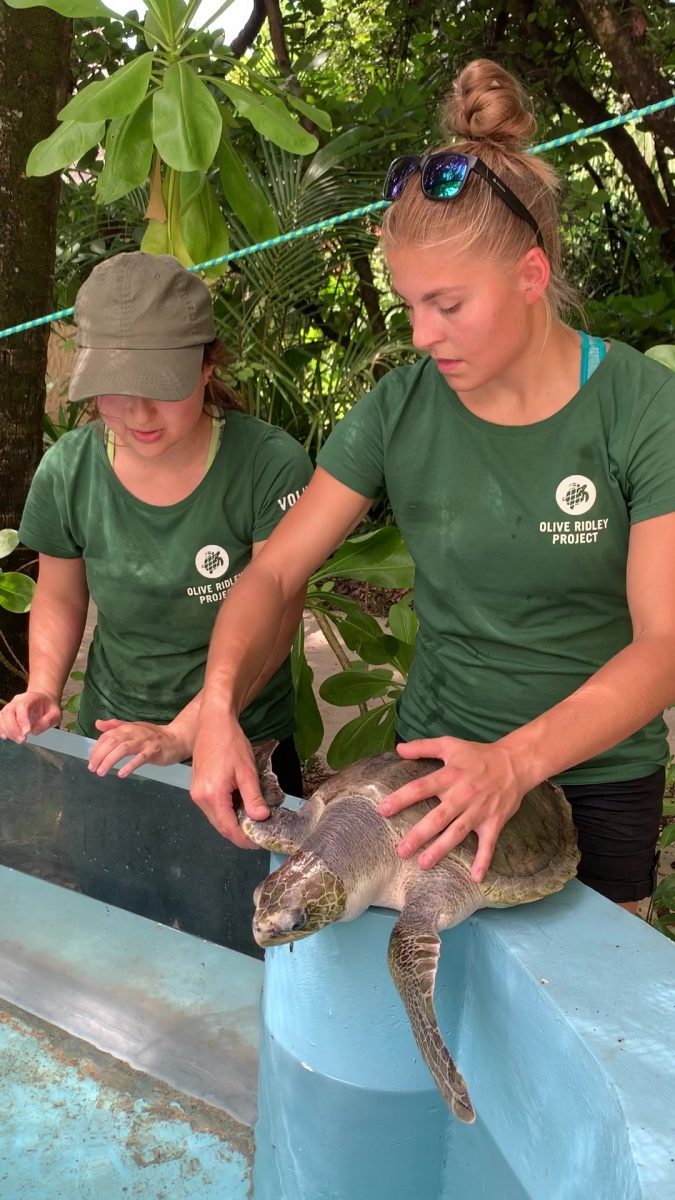

Thereby, I got to learn about the differences in the anatomy, physiology and pathology of reptiles compared to mammals, which was a fantastic opportunity to gain insight in this niche field within Veterinary Medicine, as the Veterinary studies at University mostly focus on Cats, Dogs, Horses and Farm Animals.
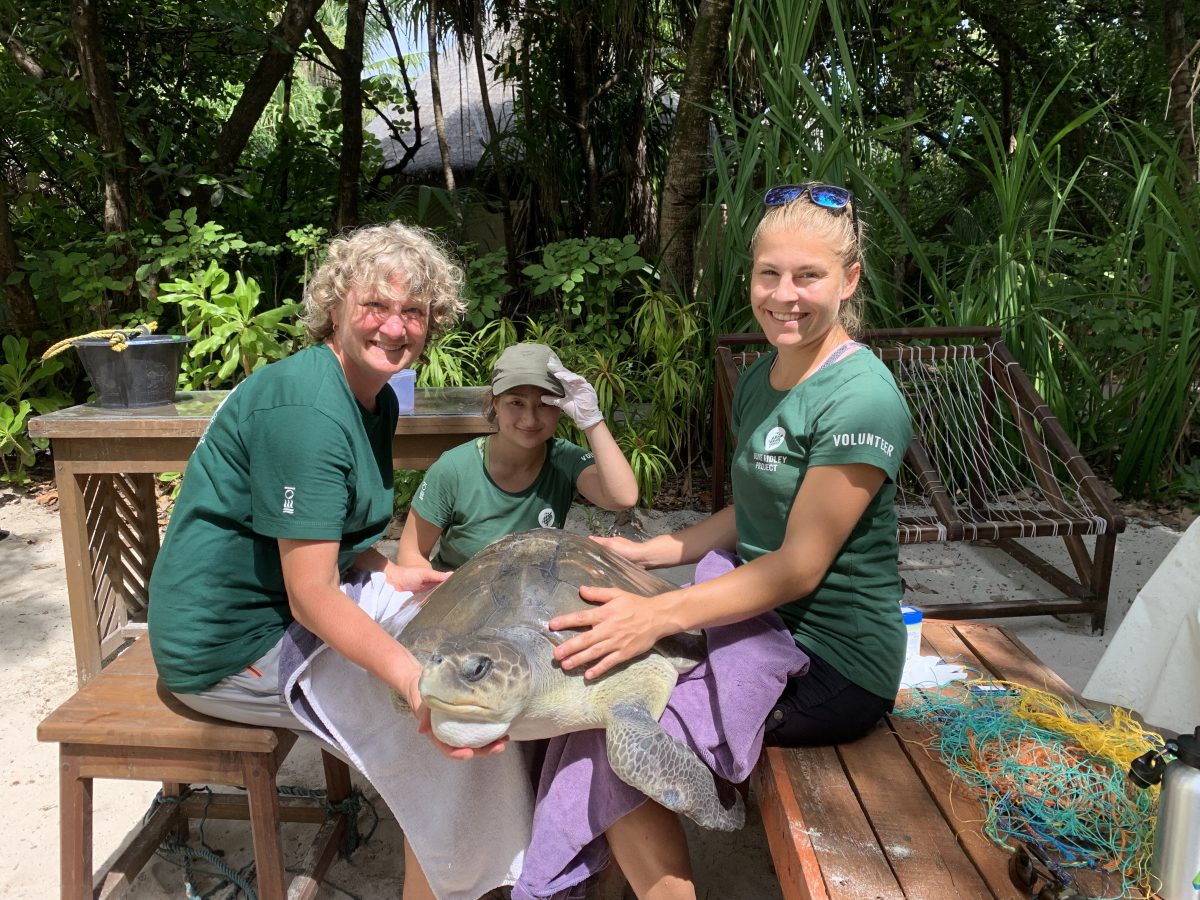
My very personal highlight was a very special form of Physiotherapy for the youngest and smallest of our patients: Artemis. Artemis suffers from the Buoyancy syndrome and is missing one of his front flippers. Therefore, his swimming is impaired and he currently can´t dive under the water surface. But to encourage him to try harder, we frequently took Artemis out for a swim in his natural habitat: the ocean. And this was the very best therapy for him, very obviously, because here, he was incredibly determined to dive and even managed to paddle himself down a few centimeters! I wish Artie all the best, and I am sure that with this special form of motivational therapy, he will progress quickly and can hopefully be released very soon.

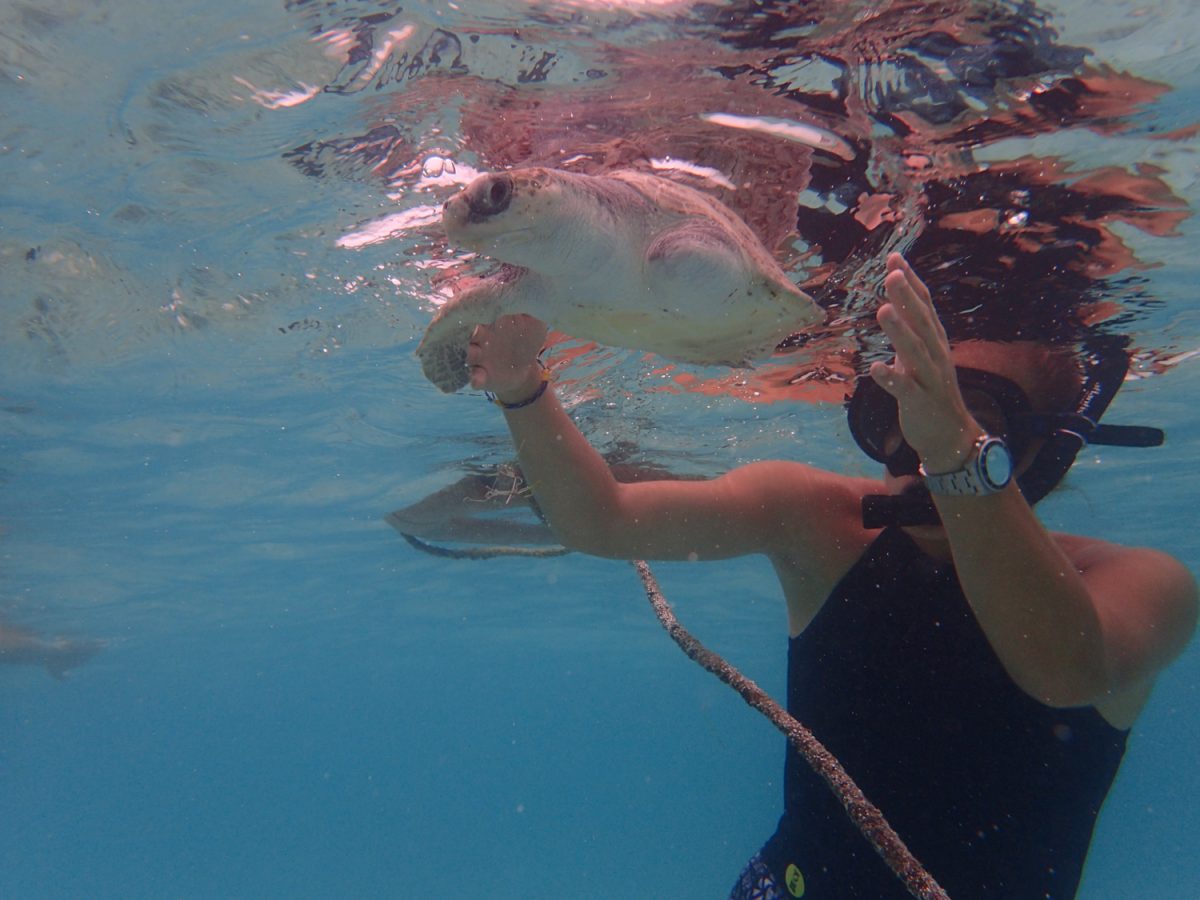

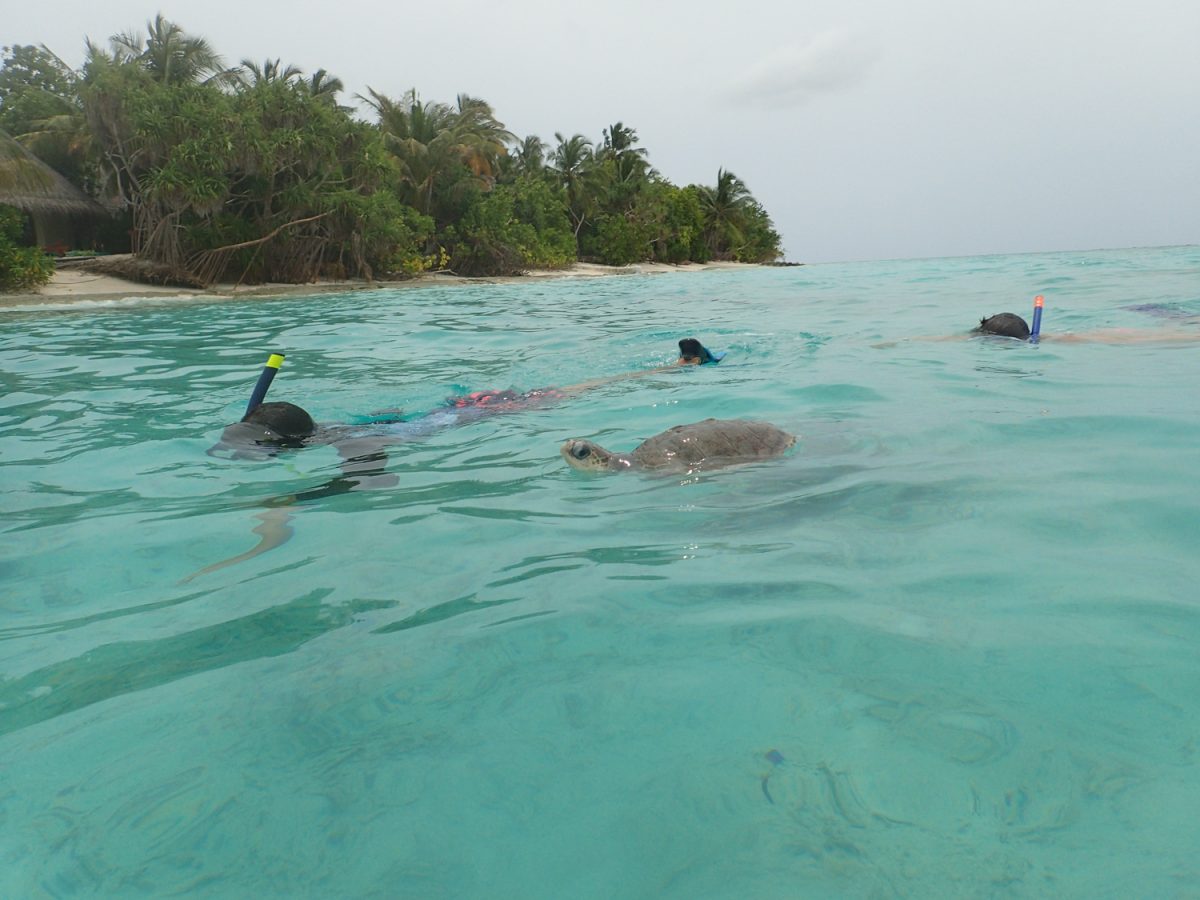
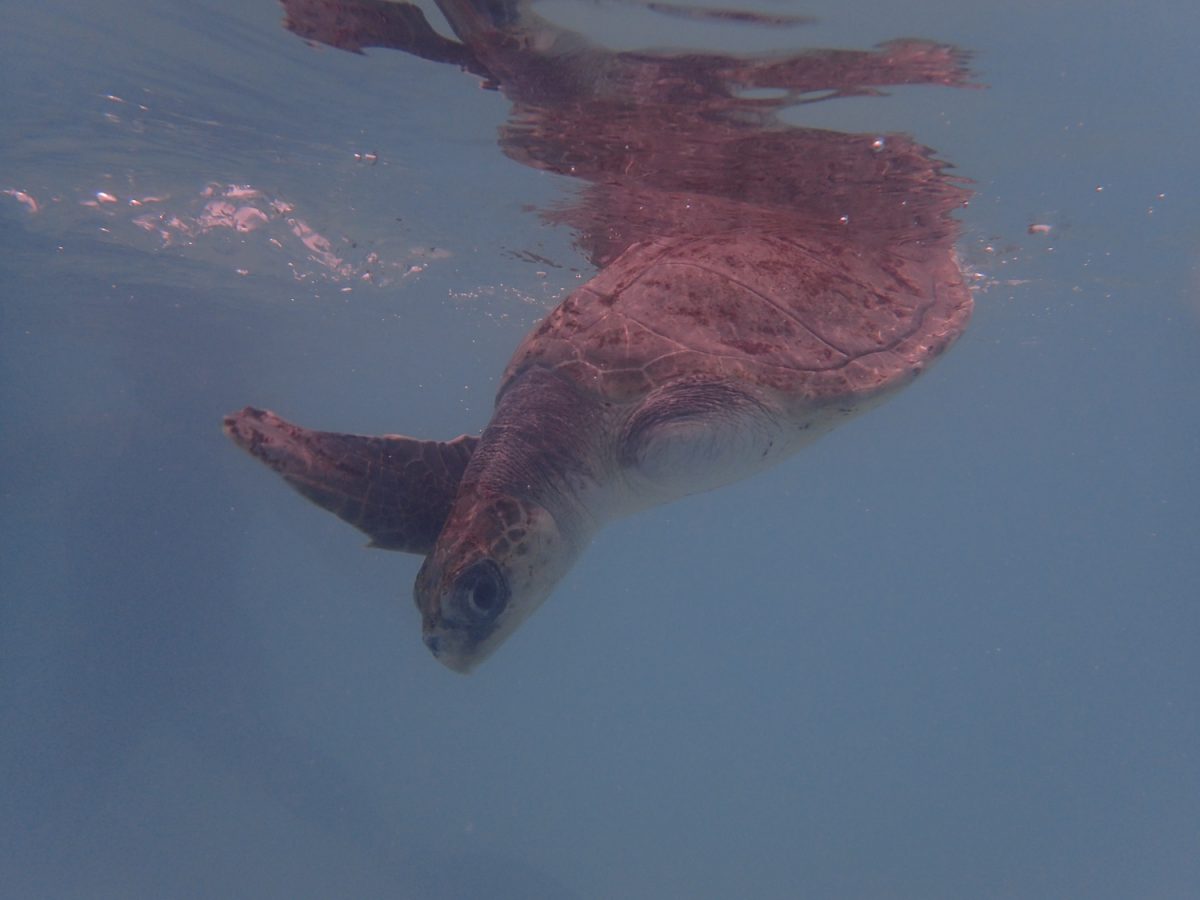
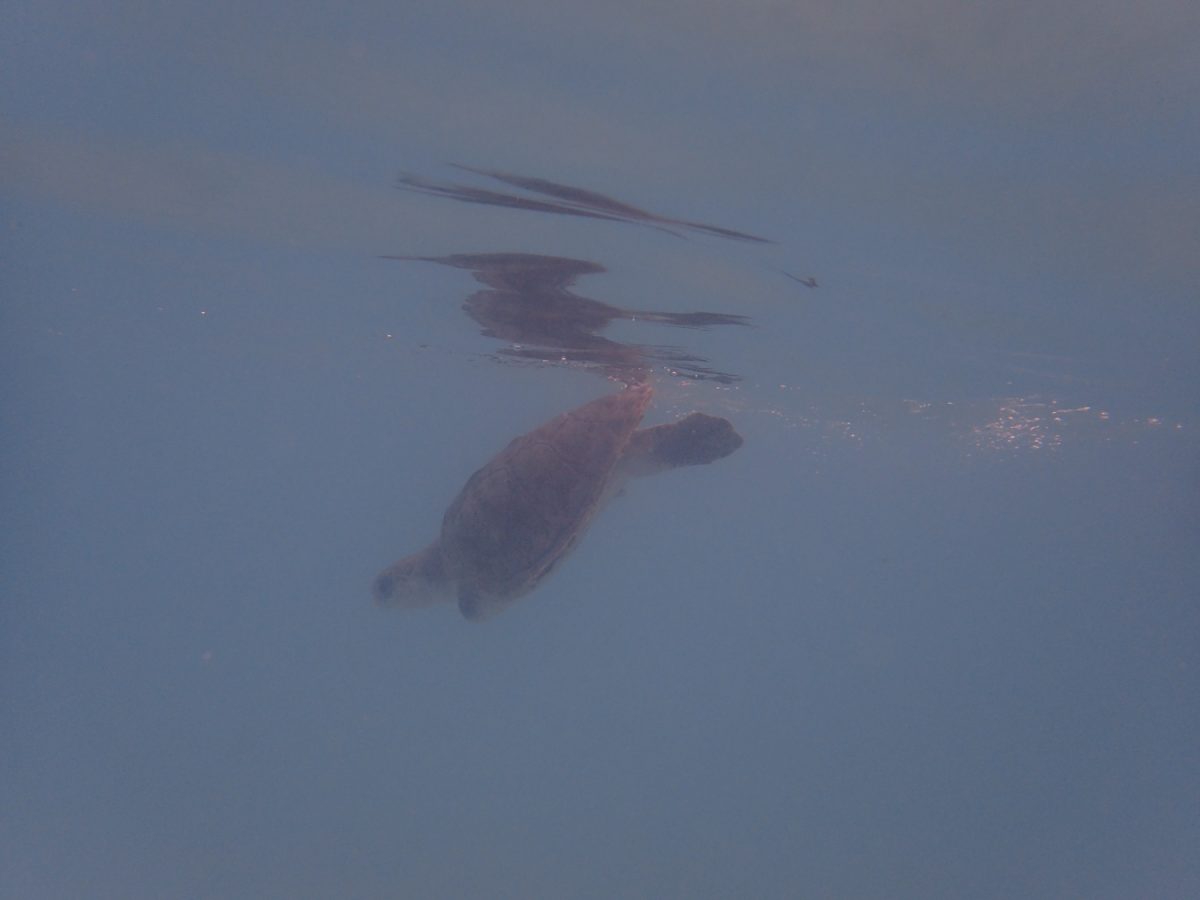
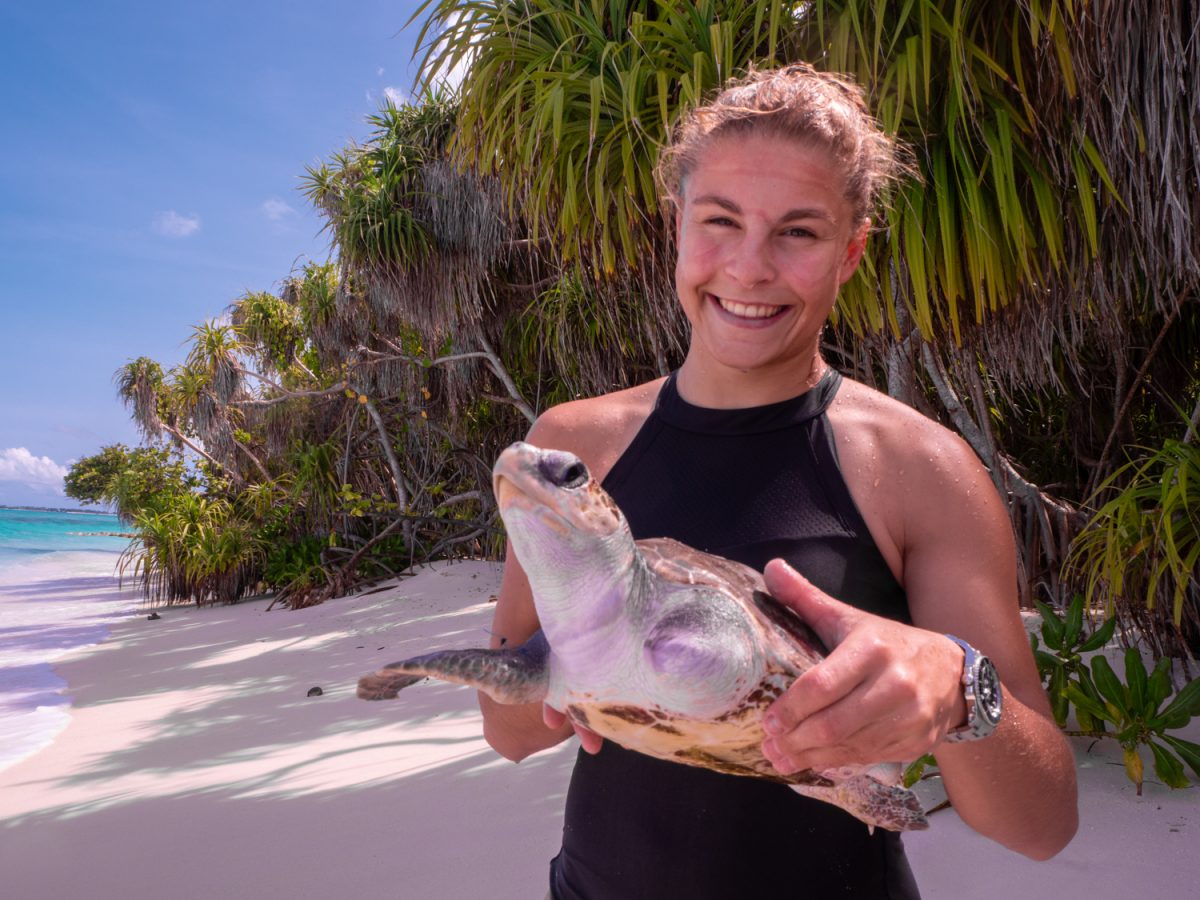
Another very new aspect for me in the work with the ORP was the public outreach within the Resort, by which we tried to educate and inspire people about the importance of Sea Turtle Conservation. We even organised the new event “Turtle Tuesday”, for which we developed fun games, quizzes and colouring events for both children and adults, and one evening, I held a presentation on Sea Turtle Conservation and the Olive Ridley Project´s work for the guests. These events also helped us to raise funds for the Project, because we could sell many bracelets, which we were handmade by us out of actual ghost nets, which some of the patients were brought to us with.
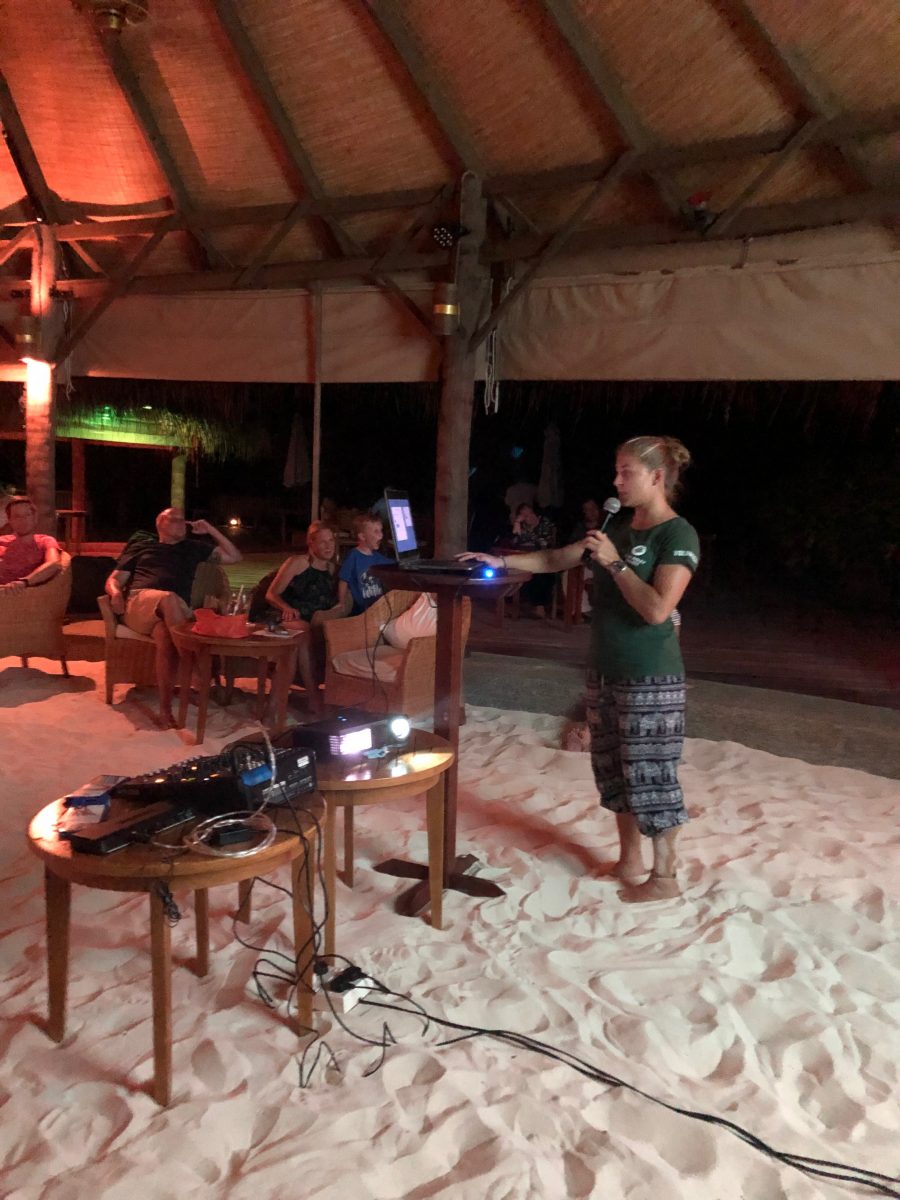
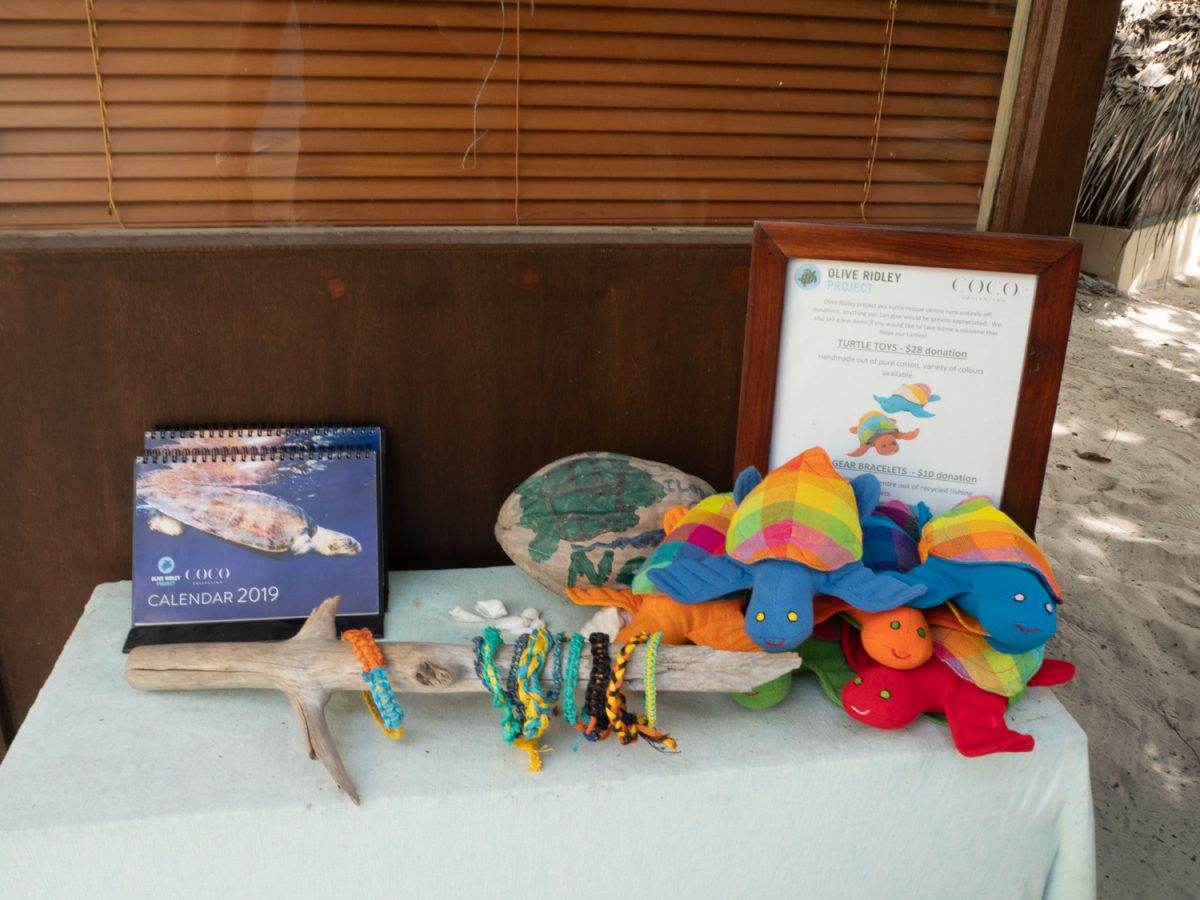
The second highlight of my time here in Baa Atoll was the hatching of a Green Sea Turtle nest, which we were guarding from potential predators, for example crabs, one (sleepless) night. We had seen a hole develop at the nesting site about 2 days before the actual hatching, which indicated movement under the sand. One baby turtle hatched at sunset, while the others waited until the moon was above the nest, before they started to clumsily make their way to the ocean. What an unbelievably magical event that I will surely never forget!
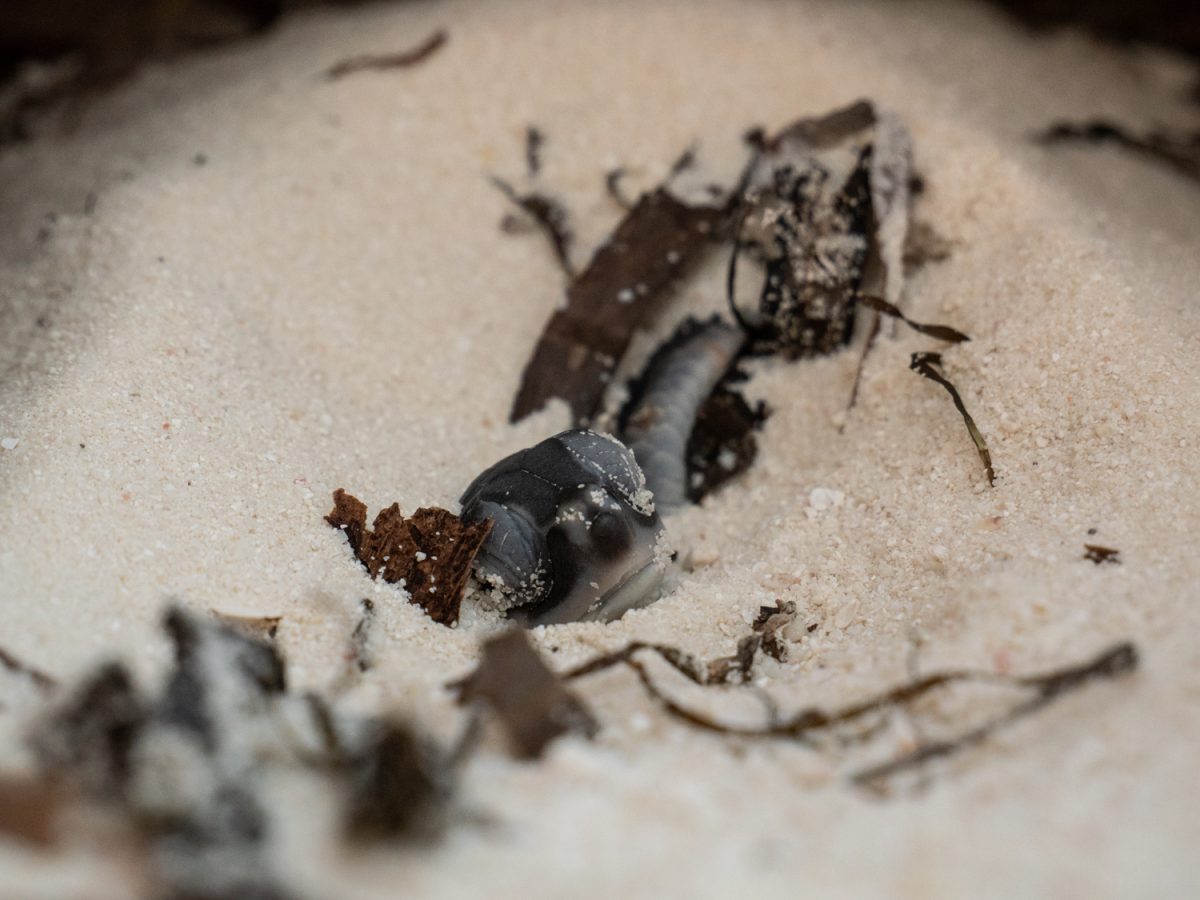

2 days after the hatching we dug up the nest to check how many hatchlings had left their empty egg shells, how many were too premature to make it, and how many were non-viable. And fortunately, we even found 2 more healthy hatchlings in the sand that we could then release into their forever home in the water, too. And as some of you may know, every little turtle hatchling, that makes it into the ocean, counts, because only about 1 in 1000 hatchlings actually survives until adulthood.
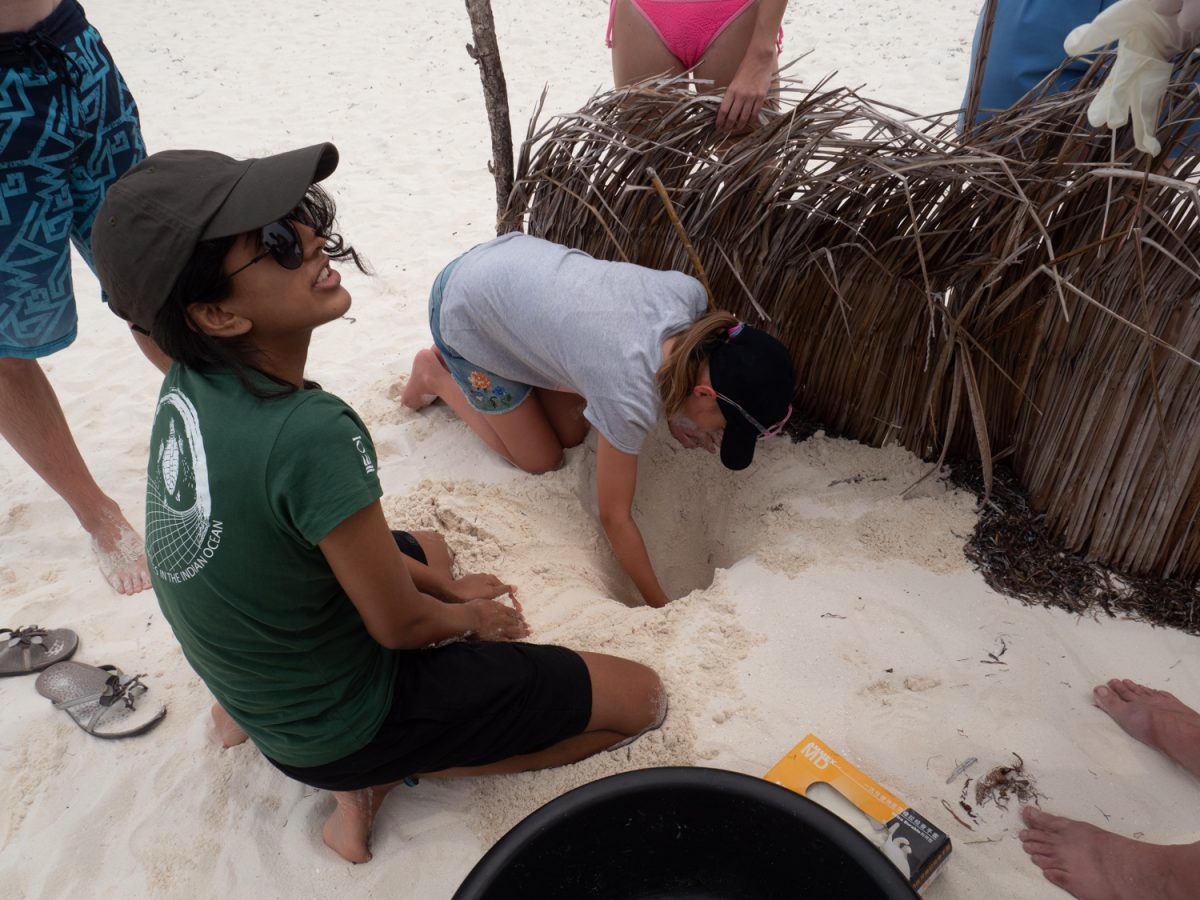


To conclude my 2 weeks at the Rescue and Rehabilitation Centre of the Olive Ridley Project, it was a very eye-opening experience to see what the entanglement in ghost nets retails for Sea Turtles, and at the same time it is fascinating how well they can heal and cope with the handicap of a missing flipper, for example. I also believe that the knowledge about Sea Turtles, their treatment and Conservation as well as the skills in the handling of them will help me a lot in my future endeavours, possibly as a Marine Wildlife vet. I would like to thank the Olive Ridley Project and Coco Palm Dhuni Kolhu so much for this opportunity and hope that all the turtle patients I got to know personally will make a quick recovery and will be released to their ocean home soon.
